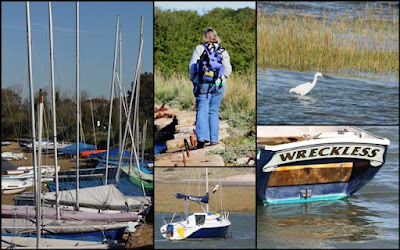This is the largest of our Grebes with its distinctive long low body, long slender neck and the long slim bill that is extensively pinkish and paler than our other species.
In full breeding plumage the rusty orange-red head ear tufts are very distinctive and during courtship the dark head plumes are raised and vigorously shaken.
Its typical relaxed pose is with the head and bill pointed downwards. (Reminded me of of someone peering over their spectacles perched on the end their nose!) The Great Crested Grebe is common sight on inland lakes, reservoirs and rivers plus large numbers congregate along our coasts in winter.
This individual is slowly changing into its winter garb when the colourful ear tufts will completely disappear and its head, foreneck and flanks will become more extensively white.All too soon it was time for it to head to the other side of the river and for me to move on after another brief but enjoyable wildlife encounter.
Whilst not a particularly notable milestone the statistics indicate that this is my 400th post. I had no idea when I started blogging on 3rd Jan 2009 that it would become so addictive but it has definitely helped me to adapt to the various changes in my lifestyle over the past year. More importantly I wish to thank all my regular readers and blogging friends for continuing to leave their very supportive comments. To all those who may casually drop by I also appreciate you taking the time to visit. FAB.


















































